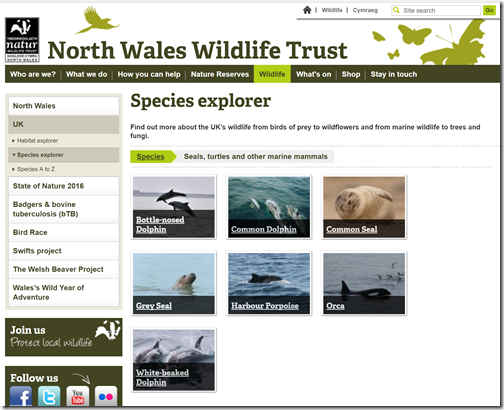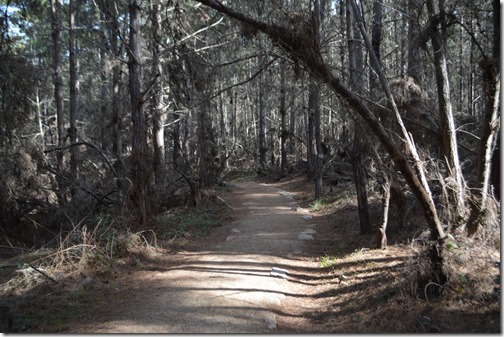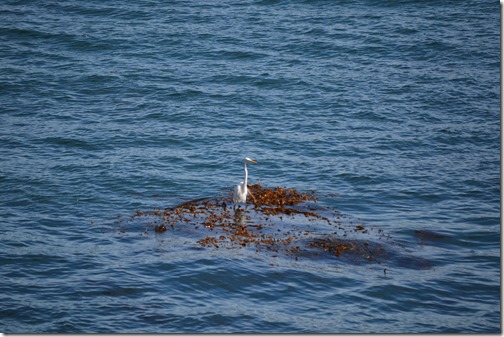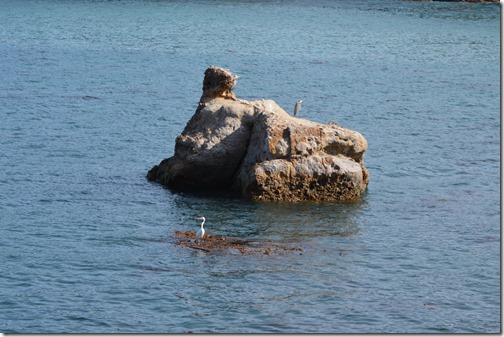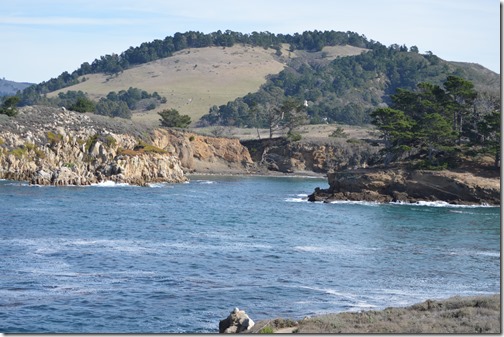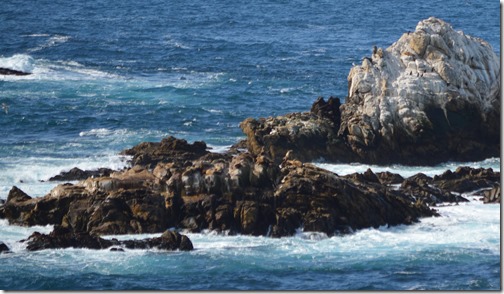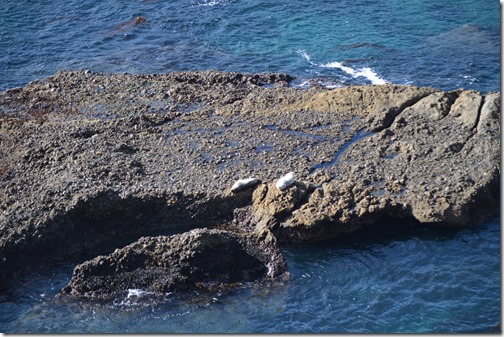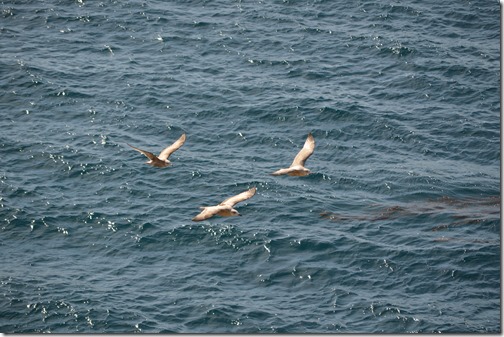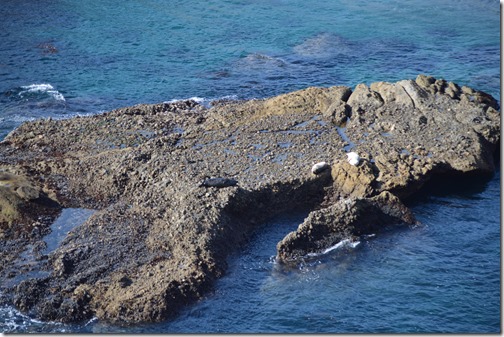In late December Kelley and I were talking to a young college student Russian woman at California Republic Bar in Prague, Czechia. A large photo covered one wall depicting a street scene that looked to me like Los Angeles, circa 1960.
We mentioned to her our hometown of Monterey is a tourist town popular for its abundance of marine wildlife. I commented that Monterey is the best town I have ever been for seeing marine mammals from the shoreline.
A man at the adjacent table to ours, who had been drinking cocktails for the previous hour with three women speaking Czech, was putting on his coat to leave the bar and piped in speaking English:
“I got you beat. North Wales is a better place for seeing marine mammals.â€
Having never been to North Wales, I could not dispute his assertion.
A few hours later I woke up in bed at our hotel in Prague with the compelling desire to research his claim that wildlife off the coast of North Wales in the Irish Sea is more abundant than what I regularly see in Monterey, California.
North Wales boasts some of the best coastlines in the UK which provide an aquatic haven marine mammals.
And Bangor University marine biologist Gemma Veneruso and Sea Watch Foundation director Peter Evans say if you look hard enough, some of these species can be spotted regularly off our shores.
LOOK: The 7 sea creatures you wouldn’t expect to see swimming in North Wales waters –
Daily Post UK – July 11, 2015.
The Daily Post article mentions harbour porpoise (most common marine mammal spotted from Wales coast), bottlenose dolphin (commonly spotted from land), grey seal (commonly spotted off North Wales coast), minke whale (common sightings), pygmy sperm whale (one was spotted in 2015, then it beached itself and died), giant leatherback turtle (spotted once in 2011 and none seen since), False Killer Whales (100 spotted in 1935, so not too relevant today. They are normally found in tropical waters around the equator. They all died in the cold water and washed up on shore).
Dead whales from years ago did not make his case for abundant marine mammals in North Wales.
Seeking a more authoritative source, I came across North Wales Wildlife Trust website with another list of marine mammals.
- bottle-nosed dolphin
- common dolphin
- common seal
- grey seal
- harbour porpoise
- orca
- white-beaked dolphin
Dolphin species seem to be abundant in North Wales. I actually do not see dolphins and porpoises very often from the shoreline around Monterey. I spotted a pod in mid-December feeding by the coast off Point Lobos. They are around the sea in these parts of Central Coast Califonria and commonly sighted in Monterey Bay from boats. I see dolphins and porpoises at times around Monterey, but these species are animals I see far more frequently from the coast when traveling through southern California.
No Big Little Lies about Monterey sea life
Yesterday I decided to take a random sampling of wildlife seen during a 90 minute walk along the coastline of Point Lobos State Natural Reserve, about six miles south of my home and nearby the Hyatt Carmel Highlands hotel.
Here is a photo essay of wildlife and scenery I came across on my walk.
Monterey Pine forest may not seem impressive to people from places with abundant forests, but for most of California’s 39 million residents living near the 500 miles of California coastline south of Monterey, any forest by the ocean is a welcome sight. Forest is common to northern California’s coast. Southern California is mostly a coastal brush and shrubs landscape.
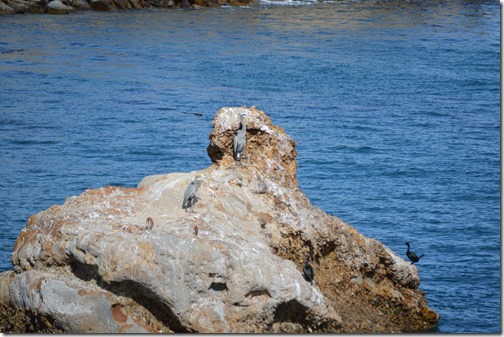
After five minutes walk through the forest I approached the sea at Whaler’s Cove to find high tide. Surprisingly, I did not spot a single sea otter or seal in the cove.
Whaler’s Cove is named for its 19th century whaling history for the time when whalers hunted in this area. About 250 whales were killed and processed here by shore whalers over a 20 year period from 1861-1882. Whales were used primarily for whale oil prior to the industry shifting to petroleum oil for lanterns.
Loyalty Traveler – Shore Whalers History at Point Lobos State Park.
Great egret standing atop floating kelp.
The beach in front of Whaler’s Cabin near this rock in Whaler’s Cove is a good place to observe a dozen or more seal pups from mid-April to mid-May.
Loyalty Traveler – Too cute harbor seal pups and sea otter pup turns 50 days old
Loyalty Traveler – My Monterey: April is seal pupping month, keep off their beaches
The Monterey County coast saw temperatures around 75 F. on February 1, 2018. That matches the typical warm July temperatures around these parts. Warm days can happen any month of the year in the Monterey area.
The problem with July in Monterey for tourists is even though average daytime high temperatures tend to be in low 70s, the probability of thick fog along the coast is greatest in the months of July and August. We can go days without sighting blue sky.
Our big little secret in Monterey is winter often gives us the best photography weather of the year.
Daytime temperature in North Wales yesterday was 46 F.
With little evidence of the area’s marine mammal wildlife revealing itself at Whaler’s Cove, I ventured west along the North Shore Trail to Bluefish Cove. I spotted a couple of California sea lions playing at the edge of the kelp bed, splashing and rolling around each other.
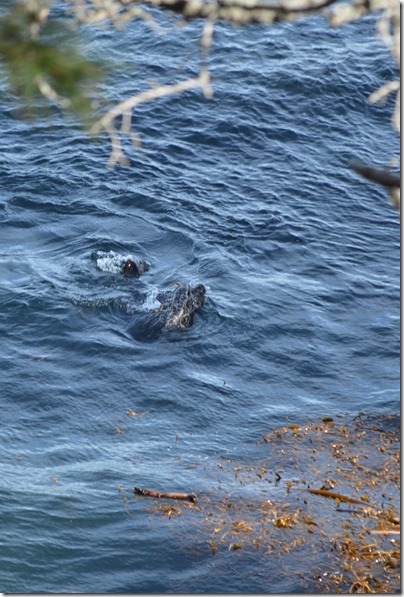
Still no sea otter sightings. Bluefish Cove is usually a place I see at least one sea otter hanging out.
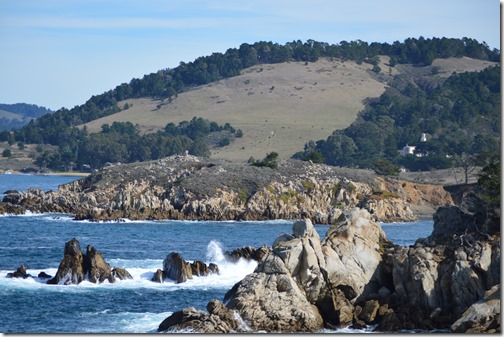
Monastery Beach at far left background and white building on hill in right background is Carmelite Monastery (1925).
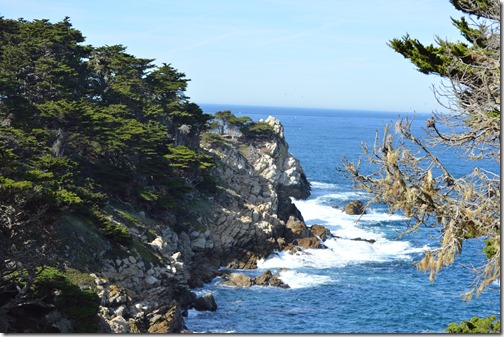
Cypress Cove is one of two places in the world with native Monterey Cypress tree groves and one of the primary reasons for the establishment of Point Lobos State Nature Reserve. Cypress Point in Pebble Beach, a few miles north of Point Lobos, is the other location with native Monterey cypress groves.
Sea Lion Trail is one of the best places in Point Lobos park for observing marine mammals. In Sea Lion Cove I spotted one common harbor seal on the large rock in the cove. Seals enjoy sunning themselves on rocks during warm sunny days.
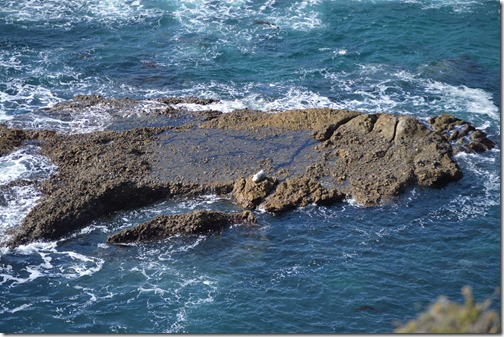
Sea Lion Point is one of the best places in the Monterey area for observing dozens and sometimes hundreds of California sea lions on the large offshore rock outcrops.
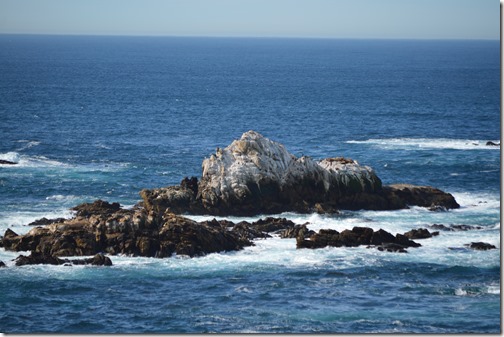
Unlike docile and quiet harbor seals, California sea lions are noisy and bark with their sound carrying a long distance across the water. They are also great climbers and can scale rocks dozens of feet high.
Harbor seals are clumsy in their land movement and tend to simply lay atop a rock as the tide goes out and roll off the rock when the tide comes back. I was surprised to spot a second seal had joined the white seal basking on the rock in Sea Lion Cove.
Usually I spot a raft (group) of sea otters around Sea Lion Cove. Sea otters were not hanging out there during my visit.
Sea Lion Point is one of the best areas on the Monterey County coast for whale spotting. January and early February is the gray whale migration season when thousands of gray whales migrate from Alaska feeding waters to Baja Mexico breeding waters.
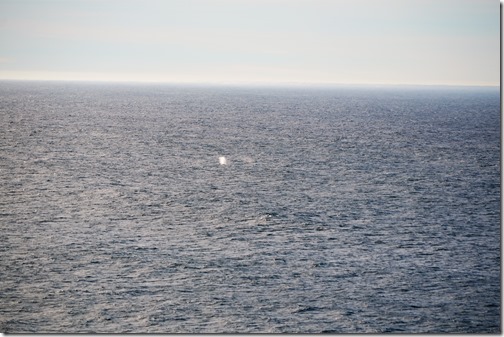
Gray whales are typically seen swimming about 0.5 to 2 or 3 miles off the coast. Sometimes whales are close enough to shore to spot their body with your eyes, but generally you need binoculars to see their bodies. A typical whale sighting is simply spotting the whale blow spraying above the sea as seen in my photo. I saw 4 different whales spouting as they swam south during the hour I stayed on Sea Lion Point.
Palos Verdes Gray Whale Census
ACS/LA GRAY WHALE CENSUS AND BEHAVIOR PROJECT (website)
Palos Verdes, California is on a promontory of high land directly south of LAX airport. There is a whale observation station there and spotters maintain an annual gray whale census each migration season.
2017-18 is a below average gray whale sighting season to date. As of January 31, there were 439 gray whales spotted swimming south since December 1.
Whales passing by Monterey can be expected to pass Palos Verdes, about 350 miles south, in about three days. Gray whales swim about 5 miles per hour.
Four gray whales is a fairly reasonable tally for me after an hour sitting by the seashore at Sea Lion Point. A friend of mine counted 10 whales last weekend at Point Lobos on his hike.
A few days ago a scuba diver in Monterey Bay captured this stunning close up video of a gray whale swimming by underwater.
Brown pelicans were noticeably absent from the skies. There are normally dozens of them flying around Sea Lion Point.
And then there were three seals on the rock as I left Sea Lion Cove.
My disappointment was not having seen a California sea otter, our local marine mammal mascot of the Monterey area.
Then, just before walking away from the seashore, I spotted the white furry head of one lone Southern sea otter floating in the middle of Headland Cove.
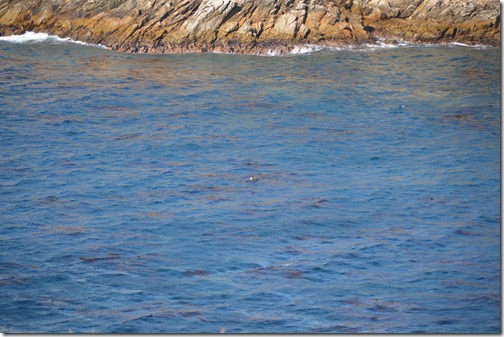
Is North Wales a better location for spotting marine mammals from the seashore compared to Monterey?
Hopefully one of these days I will be able to make a first-hand comparison.
Where have you been with an abundance of marine mammals?


